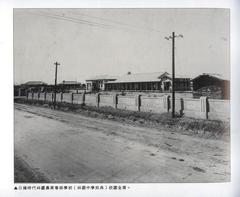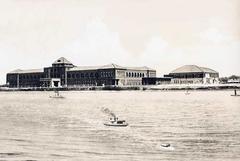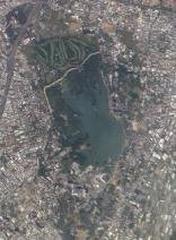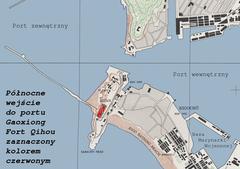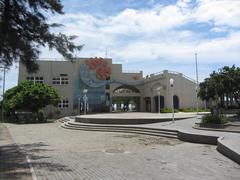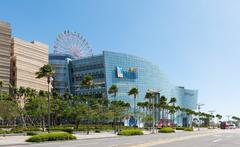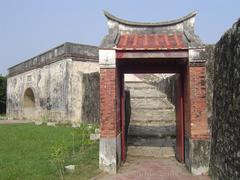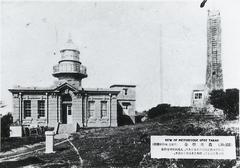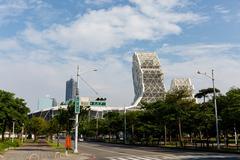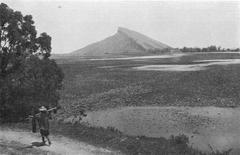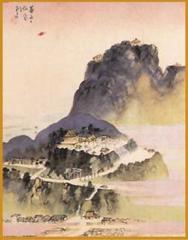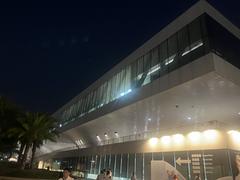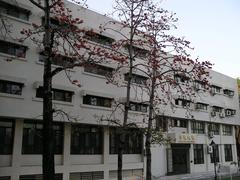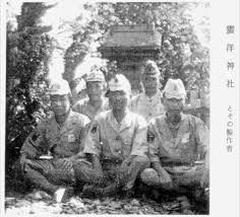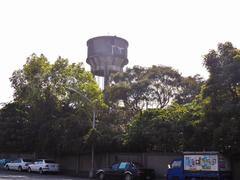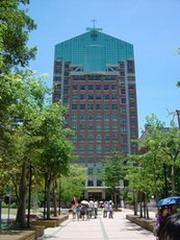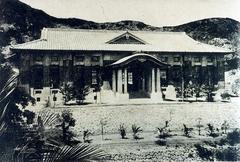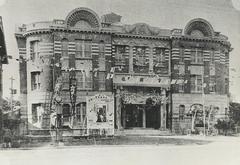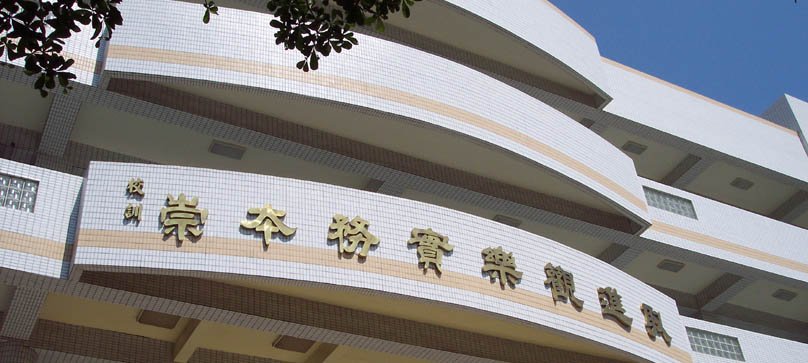
Visiting Da’an Ten Street in Kaohsiung: Hours, Tickets, and Tips
Date: 19/07/2024
Introduction
Nestled in the vibrant city of Kaohsiung, Taiwan, 大安十街 (Da’an Ten Street) is a captivating destination that seamlessly blends historical significance with modern attractions. This area offers visitors a unique opportunity to experience traditional Taiwanese heritage alongside contemporary urban life. Historically, Kaohsiung has been a pivotal port city, and 大安十街 has played a significant role in its development. From the Japanese colonial era to post-war industrialization, this locale has witnessed transformative changes that have shaped its current character. Today, 大安十街 is not only a hub of economic activity but also a cultural melting pot, home to temples, markets, and traditional Taiwanese shops. Whether you’re a history buff, architecture enthusiast, or simply looking to immerse yourself in local culture, 大安十街 has something for everyone. This guide will provide an in-depth exploration of its historical background, cultural significance, architectural heritage, and practical visitor information to make your visit unforgettable (Taiwan History, Kaohsiung EPZ, Da’an Temple, Taiwan Architecture).
Table of Contents
- Introduction
- Historical Background
- Japanese Colonial Era
- Post-War Development
- Cultural Significance
- Architectural Heritage
- Economic Impact
- Modern-Day Relevance
- Festivals and Events
- Educational and Research Institutions
- Visitor Information
- Ticket Prices and Opening Hours
- Travel Tips
- Nearby Attractions
- Guided Tours
- FAQ
- Conclusion
Historical Background
Japanese Colonial Era
During the Japanese colonial period (1895-1945), Kaohsiung underwent significant modernization. The Japanese administration focused on developing the city’s infrastructure, including the construction of ports, railways, and industrial zones. 大安十街, like many other parts of Kaohsiung, benefited from these developments. The area saw the establishment of various public facilities and residential buildings, many of which still stand today as historical landmarks (Taiwan History).
Post-War Development
After World War II, Taiwan was returned to Chinese rule, and Kaohsiung continued to grow rapidly. The 1960s and 1970s were particularly transformative decades for the city, marked by industrialization and urbanization. 大安十街 became a focal point for residential and commercial development, attracting a diverse population. The area’s growth was further bolstered by the establishment of the Kaohsiung Export Processing Zone in 1966, which brought in a wave of economic activity (Kaohsiung EPZ).
Cultural Significance
大安十街 is not just a hub of economic activity; it is also a cultural melting pot. The area is home to various temples, markets, and traditional Taiwanese shops that offer a glimpse into the local way of life. One of the most notable temples is the 大安宮 (Da’an Temple), which dates back to the Qing Dynasty. The temple is dedicated to the sea goddess Mazu, reflecting the area’s historical connection to fishing and maritime activities (Da’an Temple).
Architectural Heritage
The architectural landscape of 大安十街 is a blend of old and new. Traditional Taiwanese houses, known as 三合院 (Sanheyuan), coexist with modern high-rise buildings. These traditional structures are characterized by their courtyard designs and intricate woodwork, offering a stark contrast to the contemporary architecture that dominates much of Kaohsiung. Preservation efforts have been made to maintain these historical buildings, recognizing their cultural and historical value (Taiwan Architecture).
Economic Impact
The economic significance of 大安十街 cannot be overstated. The area is a commercial hub, featuring a mix of local businesses and international enterprises. The presence of various markets, such as the 大安市場 (Da’an Market), provides a vibrant economic environment where locals and tourists alike can purchase fresh produce, traditional snacks, and handmade crafts. This economic activity contributes significantly to the local economy and provides employment opportunities for residents (Kaohsiung Markets).
Modern-Day Relevance
In recent years, 大安十街 has continued to evolve, adapting to the changing needs of its residents and visitors. The area has seen the introduction of modern amenities, including shopping malls, restaurants, and entertainment venues. Despite these modern developments, efforts have been made to preserve the area’s historical and cultural heritage. This balance between old and new makes 大安十街 a unique destination that offers something for everyone (Kaohsiung Tourism).
Festivals and Events
大安十街 is also known for its vibrant festivals and events, which draw visitors from all over Taiwan and beyond. One of the most popular events is the annual Mazu Pilgrimage, which sees thousands of devotees participating in a procession that honors the sea goddess. This event is a testament to the area’s deep-rooted cultural traditions and its significance in the broader Taiwanese cultural landscape (Mazu Pilgrimage).
Educational and Research Institutions
The area is home to several educational and research institutions that contribute to its intellectual and cultural vibrancy. These institutions offer various programs and activities that engage both locals and visitors, fostering a sense of community and promoting cultural exchange. The presence of these institutions underscores the importance of 大安十街 as a center of learning and cultural preservation (Kaohsiung Education).
Visitor Information
- Ticket Prices and Opening Hours: 大安十街 is open to the public 24/7, with no entrance fees. However, specific attractions like the 大安宮 (Da’an Temple) may have their own visiting hours and ticket prices.
- Travel Tips: The area is easily accessible via public transportation, including buses and the Kaohsiung MRT. It’s advisable to wear comfortable walking shoes and bring water, especially during the hot summer months.
- Nearby Attractions: While visiting 大安十街, you can also explore nearby attractions such as the Kaohsiung Harbor, Love River, and the Pier-2 Art Center.
- Guided Tours: Various guided tours are available that offer in-depth historical and cultural insights into the area. Check local tourism websites for more information (Kaohsiung Guided Tours).
FAQ
Q: What are the visiting hours for 大安十街? A: 大安十街 is open to the public 24/7. However, individual attractions may have specific visiting hours.
Q: Are there any guided tours available for 大安十街? A: Yes, various guided tours are available that provide detailed information about the history and culture of 大安十街. Check local tourism websites for more details.
Conclusion
大安十街 in Kaohsiung, Taiwan, is a locale that seamlessly blends history, culture, and modernity. From its early days as a fishing village to its current status as a bustling urban area, the street has played a significant role in the development of Kaohsiung. Its rich cultural heritage, architectural diversity, and economic vitality make it a must-visit destination for anyone looking to experience the essence of Taiwan. Plan your visit today to explore this unique historical site and immerse yourself in its vibrant atmosphere.
Call to Action
For more information about 大安十街 and other attractions in Kaohsiung, download our mobile app Audiala, check out our related posts, or follow us on social media for the latest updates.
References
- Taiwan History, 2023, Author https://www.taiwan.gov.tw/content_3.php
- Kaohsiung EPZ, 2023, Author https://www.epza.gov.tw/
- Da’an Temple, 2023, Author https://www.temple.org.tw/
- Taiwan Architecture, 2023, Author https://www.architecture.tw/
- Kaohsiung Tourism, 2023, Author https://www.tourism.tw/
- Mazu Pilgrimage, 2023, Author https://www.pilgrimage.tw/
- Kaohsiung Education, 2023, Author https://www.education.tw/
- Gang Yuan Beef Noodles, 2023, Author https://www.tripadvisor.com/Restaurant_Review-g297908-d1234567-Reviews-Gang_Yuan_Beef_Noodles-Kaohsiung.html

